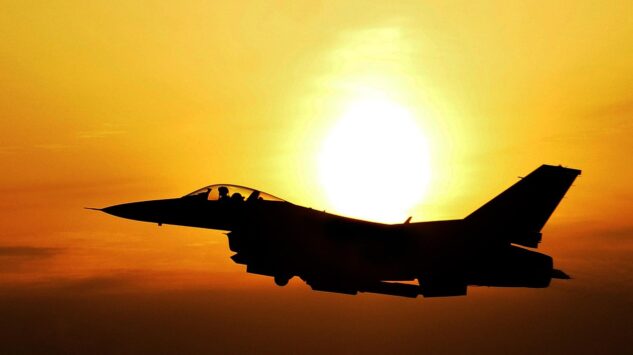Issue Briefs

By Rebecca L. Grant, Ph.D., Vice President, Lexington Institute.
June 17, 2025 – The full text of this article is available below and on the RealClearDefense website here.
Look for 28 Abrams tanks on the parade route in Washington, DC on Saturday, June 14 as the U.S. Army celebrates its 250th Birthday.
Those Abrams tanks display a famous legacy. On December 26, 1944, 30-year-old Lieutenant Colonel Creighton Abrams led the 4th Armored Division’s breakthrough to Bastogne during World War II’s Battle of the Bulge. He called his tank the “Thunderbolt.”
The Abrams tanks aren’t just on parade as part of the past glory of the Army. The Abrams Main Battle Tank remains the most lethal tank in the world and a centerpiece of combined arms maneuver – the way the Army wins its wars. Just as it took tanks to liberate Europe in World War II, tanks are essential to containing Russia in 2025 and beyond.
Russia has lost 3,000 tanks in Ukraine but “is on track to replace them all,” according to U.S Army General Christopher Cavoli, Supreme Allied Commander, Europe. Russia will produce 1500 tanks and 3,000 armored vehicles in 2025, alongside 250,000 artillery shells per month. Compare that to approximately 135 tanks per year produced in the USA, Cavoli testified to the Senate Armed Services Committee in April.
Tanks dominate close combat and the lessons of war in Ukraine have only reinforced that conclusion. U.S. Abrams tanks are mainstays for NATO’s defense of Europe. China may indeed be the pacing threat, but it is the Army’s responsibility to hold the line in Europe. Russian scenarios for invasions of the Baltics, for example, count on rapid movement of troops. Tanks control roads and junctions and stop the Russian advance. Top NATO ally Poland has a requirement on the books for an additional 800 tanks to secure its border and provide defense in depth.
This is why President Donald J. Trump saved the Abrams from virtual extinction during his first term. The Abrams was designed during the Cold War, specifically to defeat the large tank forces of the Warsaw Pact in central Europe. Then, the Obama Administration withdrew many U.S. tanks from Europe as it pushed its “reset” approach to Russia. At one point, the U.S. Army even proposed shutting down production.
Instead, Trump rejuvenated the tank industrial base in the Midwest. “The fact is we have the best tanks driven by the best soldiers, made by the best workers anywhere in the world,” Trump said when he visited the Joint Systems Manufacturing Center in Lima on March 20, 2019.
Army leadership is driving hard to accelerate the newest Abrams. The Army Transformation Initiative released May 1 by Secretary of the Army Dan Driscoll and Chief of Staff of the Army General Randy George has made tanks a top priority, alongside the new MV-75 tiltrotor aircraft for air assault, more long-range fires, and of course, drones and unmanned systems.
“You know, we are going to have armor on the modern battlefield,” George said in a recent podcast interview. “One of the things we’re very focused on is having a fully digitized and modern Abrams tank that’s out there that is diesel hybrid electric, that has active protection, that is modular, can be updated, you know, is basically enhanced with software.” George explained that the Army is “up gunning our infantry brigade combat teams into mobile brigade combat teams” and they need the Abrams at the core.
President Trump and his team have had a major hand in the new Abrams. In 2020, the Army Science Board presciently evaluated the role of Abrams tanks in threats to the Baltic States in the 2035-2040 timeframe. They called for a new Army tank in the Abrams family but with major changes. The program is designated the M1E3 Abrams – marked with an “E” to denote an engineering change to an existing platform that is goes beyond simple modifications. As longer-range threats increase in both lethality and survivability, the M1E3 Abrams will be able to defeat those threats.
The M1E3 is being designed around an internal computer network ready for AI and teaming with unmanned vehicles. This variant reduces weight by 10 tons and improves fuel consumption by 50%. Just as important, the M1E3 prioritize enhanced armor, protection from drones, and reduced emissions and electronic signatures. Even the turret may be unmanned.
Back in 2023, initial operational capability was planned for the 2030s. Under the transformation initiative, the Army wants significant acceleration of the M1E3 timeline to field it within 24-30 months.
“Winning wars requires the offensive capability to compel an adversary to yield to the will of the U.S.,” Army study authors wrote in 2020.
Backed by the no-limits friendship with China, “the Russian regime has refashioned its military, economic, and social structures to sustain what it describes as a long-term confrontation with the West—systemic changes that illustrate Russia’s intention to confront us into the foreseeable future,” Gen. Cavoli said.
Abrams will answer the call.
This article was originally published on the Lexington Institute: The M1 Abrams On Parade And Containing Putin (From RealClearDefense) | Lexington Institute
Legal Disclaimer:
The Global Policy Institute (GPI) publishes this content on an “as-is” basis, without any express or implied warranties of any kind. GPI explicitly disclaims any responsibility or liability for the accuracy, completeness, legality, or reliability of the information, images, videos, or sources referenced in this article. The views expressed are those of the author and do not necessarily reflect the opinions or positions of GPI. Any concerns, copyright issues, or complaints regarding this content should be directed to the author.